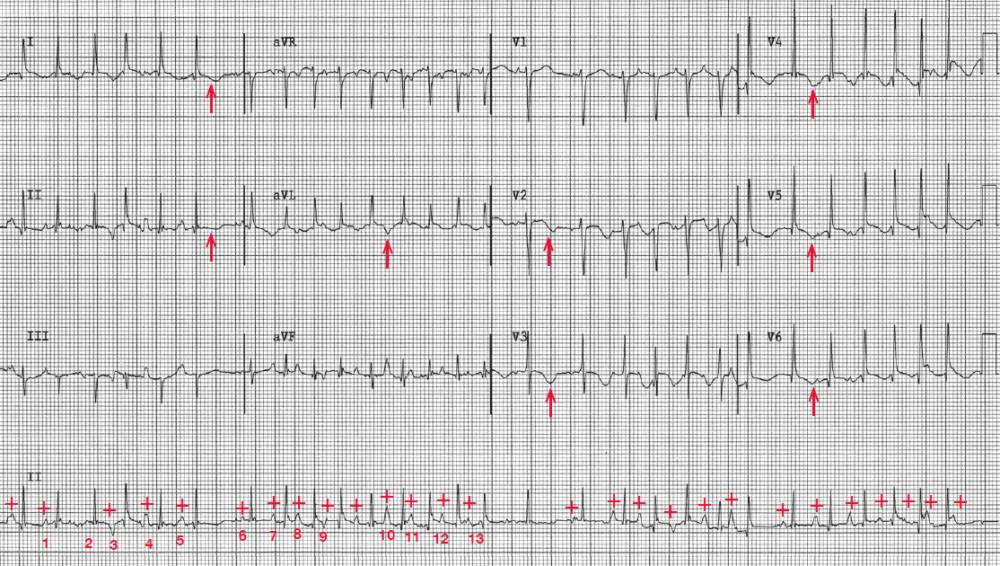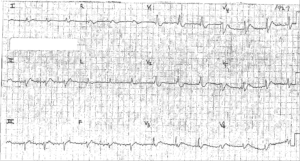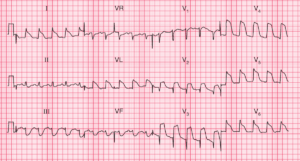The rhythm is irregularly irregular at an average rate of 168 bpm. There are only three supraventricular rhythms that are irregularly irregular:
- Sinus arrhythmia, in which there is only one P-wave morphology and a stable PR interval
- Multifocal atrial rhythm or wandering atrial pacemaker (rate < 100 bpm) or multifocal atrial tachycardia (rate > 100 bpm), in which there are three or more P-wave morphologies and often PR intervals without any one P-wave morphology being dominant
- Atrial fibrillation in which there are no organized P waves
There is a P wave (+) before each QRS complex, but there are multiple (three or more) P-wave morphologies with no P-wave morphology being dominant. Therefore, this is multifocal atrial tachycardia and not atrial fibrillation. There are diffuse ST-T wave changes (↑) noted.
Multifocal atrial tachycardia is a difficult arrhythmia to treat. Initial treatment is directed at the underlying medical condition, in this case the severe bronchospasm.
Initial therapy for the arrhythmia itself would be rate control. It would be reasonable to treat with a calcium channel blocker, which may reduce AV nodal conduction and thus slow the ventricular rate.
There is some evidence that a calcium-channel blocker may depress the multiple ectopic foci and hence terminate the arrhythmia. In some cases multifocal atrial tachycardia will revert to atrial fibrillation.




